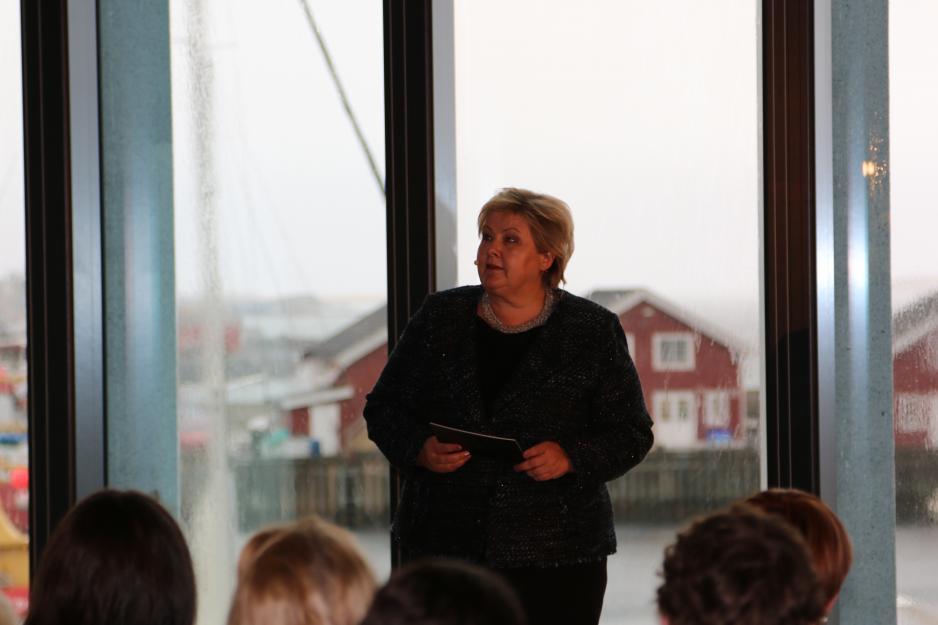Commentary: Neighbors in a changed terrain

The Norwegian Government released a new strategy document for the High North at the end of last month. The strategy is called Nordområdestrategi- mellom geopolitikk og samfunnsutvikling or ‘The High North Strategy: Between Geopolitics and societal development’. (NB: there is not yet an official English translation, but the English speaking reader can check out a longer press release here).
Most of the Arctic strategies of other countries contain both statements about international cooperation and domestic aspirations and plans. Norway’s new strategy is no exception to this trend (and like previous iterations of the strategy in this regard).
However, the new High North strategy is the first Arctic strategy document to be signed off on by the whole of government in Norway, whereas the Ministry of Foreign Affairs has previously been the main author. The strategy includes chapters on international cooperation, economic development, science and research, infrastructure, and environmental protection.
As High North News has written previously, the strategy has been well-received by northern Norwegian audiences (article in Norvegian, editorial note), many of whom were consulted during the strategy’s writing process. Key northern politicians from non-government parties, in particular the Labour Party, have since forwarded some criticism. They have noted that the strategy lists all the key changes and available instruments, but does not prioritize between them and may leave too much in the hands of market forces.
Comparatively, the foreign policy or cooperation aspects of the strategy have thus far been little discussed.
So, what are some of the key points of continuity and change when it comes to Norway’s international position? Much remains the same as in previous strategies. This sends a signal that there is a fairly well-anchored agreement across the political spectrum in Norway about the aims and instruments of Norwegian Arctic foreign and security policy.
For example, and like other Arctic states, the peacefulness of the region, the high-level of cooperation between states, the pre-eminence of the Arctic Council as a circumpolar forum, and sufficiency of the U.N. Convention of the Law of the Sea for Arctic governance questions are underlined. The centrality of people-to-people relations, like the Barents cooperation, as a supplement to inter-state relations is emphasized.
These cooperative forums are seen as a pragmatic means to solve specific cross-border problems and also as an effort in the broader service of a peaceful region. A position at the forefront of knowledge production relevant to managing Arctic challenges is another consistent aspiration. A novelty is the planned inclusion of regional political leaders in Arctic Council delegations to ensure ongoing conversation between national and regional concerns.
Perhaps the most changed element from previous High North strategic statements is, unsurprisingly, the relationship to Russia.
Russia was instrumental to issuing the 2008 Ilulissat Declaration that united the coastal states in a joint statement of regional peace, and the country concluded a long-awaited delimitation of overlapping claims in the Barents Sea with Norway in 2010. In the 2011 strategy, hopes for the potential breadth and depth of cooperation with Russia were high: ‘Norway emphasizes the continuation of the development of a close and predictable cooperation with Russia in the North. The vision is that we are gradually able to develop the neighbourliness to encompass qualities we know from the open and trusting neighbourly relations Norway has with its Nordic neighbours.’
Russia’s violation of international law in Ukraine in 2014 and the suite of responses enacted by North American and European states, including Norway, make for a substantially different backdrop for the new strategy. Russia has repeatedly underlined its commitment to international law in the Arctic. All the Arctic states, including Russia, have seemingly buffered circumpolar cooperation from broader geopolitical tensions. Nonetheless, bilateral and multilateral relations have to be anchored in national policy environments that are, on the whole, considerably more wary of Russia’s intentions (and vice versa in Moscow).
The newly released strategy reiterates Norway’s commitment to having a good ‘neighborly’ relation to Russia and underlines how essential a broad suite of cooperative efforts have been for predictability and stability in the High North. The strategy mentions as an achievement the slight expansion of the program of visa-free travel for Russians and Norwegians living within 30 km of the countries’ shared borders. The strategy also reiterates the intention of the Norwegian government to maintain a high level of cooperation with Russia in key areas of mutual interest, such as nuclear safety, fisheries, health and so on.
Importantly, the strategy demonstrates a commitment to political-level dialogue between the two countries, which had been frozen since 2014 until just recently.
Spring 2017 witnessed a more assertive line from Russian diplomatic representation to Norway. An open letter published by the Russian ambassador raised the question of Russia’s willingness to continue to allow Norway to pursue cooperation in areas of interest, while refusing to engage in high-level political dialogue. On the same day the Embassy’s letter was published in a major Norwegian daily newspaper, it was announced that Foreign Minister Børge Brende would be traveling to Arkhangelsk to participate in an Arctic conference in spring 2017, although the timing of the release of those plans may have been coincidental.
This was an interesting moment. One can consider that actively cultivating Arctic cooperation around areas of specific mutual interest while abstaining from the broader set of diplomatic tools, like top-level political dialogue, may have been a more sustainable pursuit over time for a global superpower, like the USA, than for Norway.
The Russia-Norway relationship has long been understood as an asymmetrical by the Norwegian policymaking and academic community.
With the clarity of hindsight, the aspirations and expectations around the Russia-Norway relationship from the 2011 strategy seem quite optimistic and distanced from this longstanding understanding of the ‘small state’/ ‘large state’ characteristics of the bilateral relationship. It is indeed, however, a bitter thing to put fully those aspirations of a more integrated, more trusting world behind us.
The new strategy’s tone, in my opinion, is reasonable, measured and seems to take into account the countries’ quite remarkable, longstanding bilateral relationship and the turbulence of the past three years. On the whole, the strategy’s description of its relationship to Russia still reads as neighborly, but where the homeowner has realized that their neighbor’s house casts shadow.

